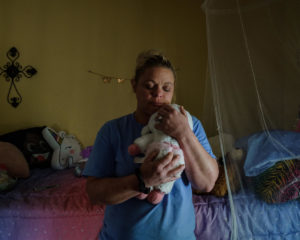Genealogy often looks like thumbing through old documents and pictures, but what story does skin color tell about family lineage?
From Philly and the Pa. suburbs to South Jersey and Delaware, what would you like WHYY News to cover? Let us know!
When you think about ancestry or genealogy, what first comes to mind?
What about DNA kits like 23andMe? Ancestry.com? Or, for the research library enthusiasts, census reports from the 1800s?
All of these methods can unlock family histories and the stories of where we came from. Each offers a glimpse into our ancestor’s place in history and how that influenced where their descendants are today.
Biological anthropologist Nina Jablonski said one piece of the ancestry puzzle tends to be the most surprising: skin color. This one biological feature can provide hints as to where in the world ancestors came from. But how?
“Having naked skin, having sweaty skin, mostly hairless skin and having skin in different colors, that’s the product of evolution, and it is related to the intensity of the sun,” she told Billy Penn.
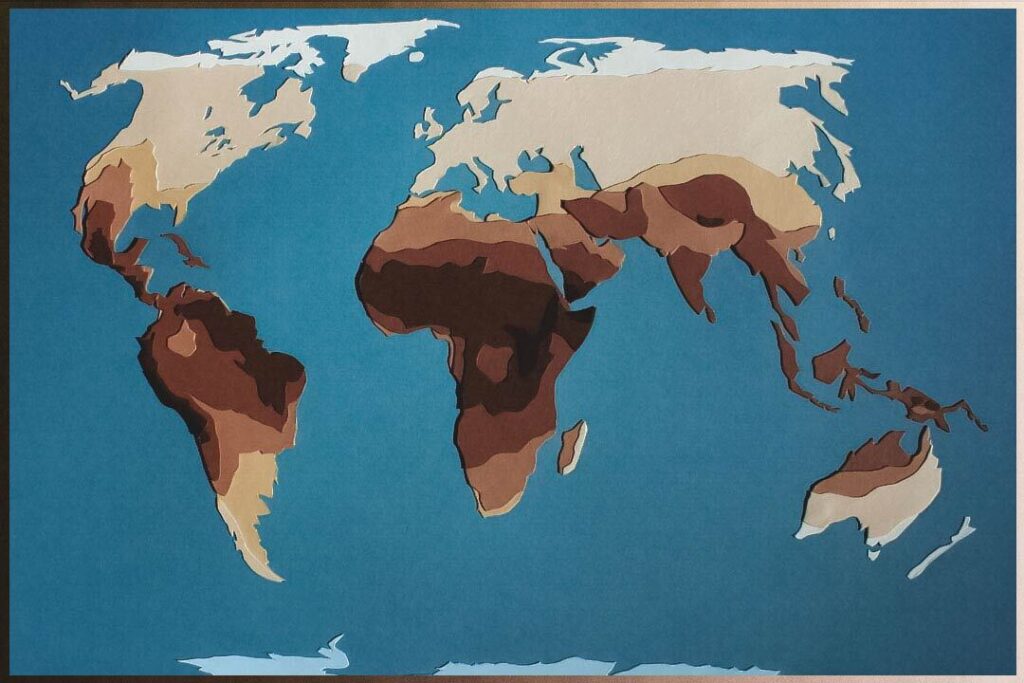
Jablonski is best known for her work at Penn State University on the evolution of skin tone, or what she calls the “sepia rainbow,” in her TED Talk.
She and her research partner and husband, George Chaplin, collected data on skin colors and solar radiation for 10 years to “put all of the evidence together into a cohesive story,” she said.
Before then, there was no pre-existing data or research on possible connections between UV radiation and how or if skin color evolved in different parts of the world. Using NASA satellite data, Chaplin and Jablonski compared records of UV radiation with geographical records of skin color. It was a match.
“Skin color was darkest where surface UV was strongest, the overlay clearly showed, and lightest where surface UV was weak,” according to a Penn State write-up.
They came up with a hypothesis: “Humans evolved the ability to produce melanin, the dark-brown pigment that acts as a natural sunscreen,” according to Penn State.
Since then, researchers like her have been called upon by the National Academy of Science and the U.S. Census Bureau to better understand how to classify people more accurately. The federal Census survey’s results inform cities of how to draw maps of their voting districts, where aid is needed and, more widely, for medical research.
Studies like hers have helped change how U.S. organizations define various groups. It has also encouraged federal organizations to critically examine their previous methods and criteria. Earlier this month, the White House approvednew boxes to check for the next census, expanding options for “Middle Eastern or North African” and “Latino,” according to NPR.
The effort has been years in the making. In the last decade or so, reports have shown Latinos are often unsure what race box to check. In 2020, roughly 44% of Latino respondents ticked “some other race.”
“For a long time, we’ve taken these census categories more or less for granted. People often don’t know exactly what boxes to tick, but they still tick them,” Jablonski pointed out.
Research on skin color applies not only to federal surveys or the census but also on a more personal level for those seeking to know more about their own family’s roots. Her findings are best summarized in an artful interpretation of the world map, a collage of skin tone gradients in the shape of their respective countries.
“One of the things that has grown out of this, which I’m really happy about, but I couldn’t have predicted, is a big interest in what does race mean and how does [skin] color map on to race?” Jablonskii said.
Related Content
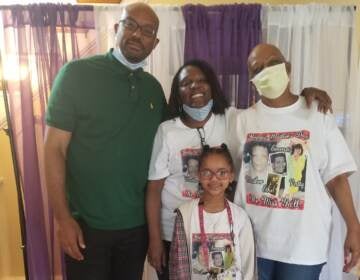
Population-level and familial risks exist for inherited cancer disorders. Diversifying the genetic counseling field is one solution.
2 years ago
Personal discovery
Family stories often spark interest in ancestral research passed down from generation to generation.
With stories of a great-great-great grandparent moving someplace to find stability and prosperity, the catalysts for migration might be different — war, displacement, economics, job opportunity or famine, for example. For others, their ancestors tended to their native land century after century in the hopes that it would be passed down to future generations.
The story of skin tone gradients is another critical piece in one’s family genealogical journey.
Genealogy, as defined in Britannica, is the study of family origins and history. The word “Genealogy” comes from two Greek words: “genea,” which means “race” or “family,” and “logia,” which means “science” or “theory.”
Jablonski’s research is part of that process and says it is important to pique young people’s interest. So, several years ago, she and Henry Louis Gates Jr. created “Finding Your Roots Classroom: The Seedlings,” a toolkit with classes, talking points—like skin color—and resources.
“Kids being kids, they don’t have a lot of cultural baggage in the game. And so they come with very fresh eyes and ears and they simply want to know what’s going on,” Jablonski said. “In a short lesson what these kids get is an appreciation for, ‘Oh, my skin color is a beautiful natural trait. That’s the product of evolution. Isn’t that cool?’”
Jablonski said teaching students the science of skin color and genealogy provides them with a strong foundation to better understand themselves and eschew old-fashioned values, also known as skin tone bias.
“That’s a biggie. Getting the eight-year-old to be enthusiastic and happy about their own skin,” she said.
In late March, WHYY hosted a “Finding Your Roots” event to help Philadelphians understand local resources and strategies available when they hit dead ends in their research.
Hollis Gentry, a renowned genealogy specialist at the Smithsonian Museum was a panelist at that event last month. She got into genealogy as a young teen. Gentry said she was naturally curious to learn more about her family lineage.
When she was just 13 years old, Gentry consulted and spoke with family members, then spent hours at historical societies and the library scouring archives. She explained that her goal was to piece together her family’s story and find where she belonged. She defines herself as “African American with various other ethnic or geographical roots.”
“A lot of it had to do with my confusion about who I was and where I was,” Gentry said. “My identity at home differed from the external environment, like the school and community and I was puzzled by it. I needed to figure out something that I could move forward with.”
Gentry had several personal moments of discovery. One of the first happened in high school, taking oral history and applying her research skills to find proof.
She recalled her mother’s stories about a great-uncle, who worked as a waiter on a steamboat that traveled between Baltimore and New York, a local regional luxury. Bits of key information would emerge as her mother spoke, she said.
For instance, her mom knew the name of the steamboat company and had found a book about that company. Gentry tracked down the book and was able to piece together a collage of his life, complete with an image of her distant relative.
Breakthroughs like those may not always happen, but the genealogical search is worthwhile, she said. It is part of why she works at the Smithsonian National Museum of African American History and Culture.
Although one of her ancestor’s stories is incomplete, she still cheerily shares how she takes after a woman named Lucretia, which also happens to be Gentry’s middle name.
What she does know is that her great-grandmother’s mother was Native American, named after an abolitionist, and lived in New York until she met her husband and moved to the South. Each bit of information, Gentry said, sheds light on how families become what they are today.
“It helps you to navigate through all of these things, having a sense of self and having the awareness that you are in control of your identity,” she said. “The actual process of research helps you to understand history or the history of personal relationships through time.
“And after a while you start to see these commonalities, things that happened 100 years ago or a thousand years ago that are very similar to things that are happening today.”
Related Content
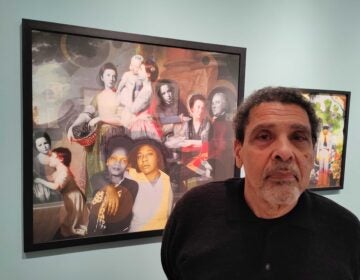
Collages at Philly’s Print Center reimagine race and portraiture
Artist Gary Burnley in the Print Center’s 98th annual competition mashes Black and white portraits into the same image.
2 months agoListen 1:54
Sense of self
Digging into family history can also help people contend with their multiple identities in the present, says Haley Pilgrim, who grew up multiracial in an all-white area of western Michigan.
Pilgrim’s experiences informed her graduate work in sociology at the University of Pennsylvania, which investigated how multiracial people racially identify. There was a disconnect with self-identifying as Black when the other parent was white.
Then there was how the public perceived and categorized her. Pilgrim said “mixedness” is complex.
“Growing up my father was building a museum of racist memorabilia. The only thing I ever saw of ‘mixed’ was this idea of a tragic mulatto not fitting in either world. I really wanted to do more research to figure out how multiracial people can find belonging and how it could not be this tragic identity, but rather an empowering identity,” she said.
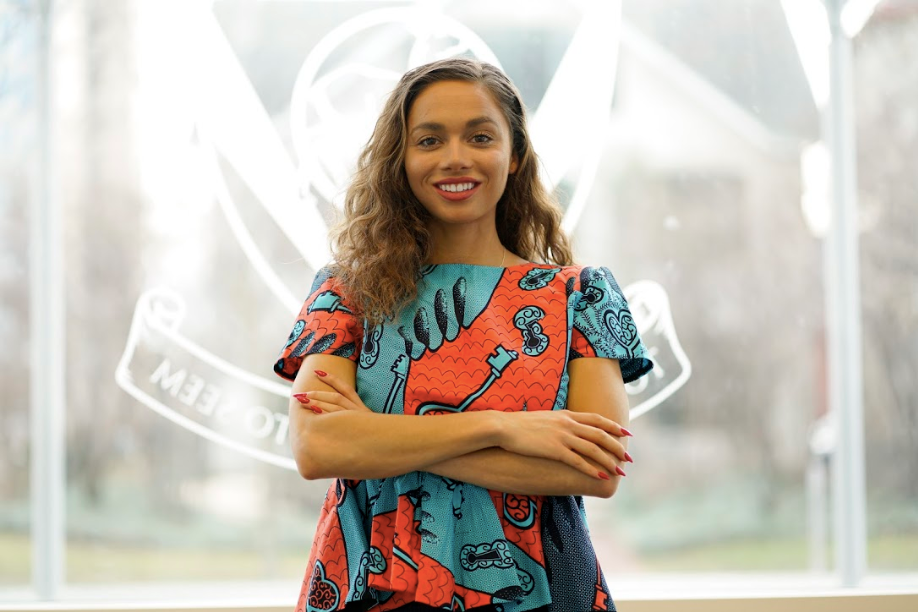
She interviewed 30 multiracial participants, all of whom had Black and white parents.
Through her sociological research, Pilgrim found that most times, people opt out of identifying as Black and tick “multiracial.” That research inspired her to become a racial identity coach.
“There’s a separation between how someone personally identifies, which might be as Black, and how they categorize themselves to others, which might be as multi-racial. That way they don’t feel invalidated by others who might think, ‘Well, you don’t really look like that,’’’ Pilgrim said. “People’s identities can change. It’s an identity journey.”
Jablonski’s research supports that at an evolutionary level. Her decades-long research into skin tone variations shows how the color of one’s skin evolved because of how close or far ancestors were from UV radiation. Migratory patterns from centuries ago have transformed the most visible part of us, but societal norms placed certain skin tones into a hierarchy.
Related Content
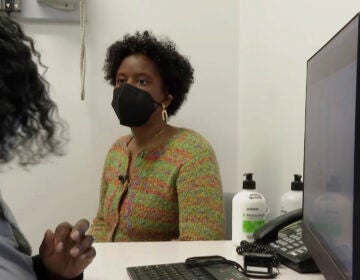
A biased test kept thousands of Black people from getting a kidney transplant. It’s finally changing
The U.S. transplant system ordered hospitals to quit using a test that made Black patients’ kidneys appear healthier than they really were.
1 month ago
A quick history recap
In the 1500s, the concept of “race” was born, most frequently used by European peoples, according to the National Museum of African American History & Culture. During the 17th and 18th centuries, European Enlightenment thinkers pushed forth the idea, along with colonization, and evolved it with the formation of the U.S. By the late 18th century, “race” was used to classify or categorize others by how they look.
“Over centuries, the false notion that ‘white’ people were inherently smarter, more capable, and more human than nonwhite people became accepted worldwide. This categorization of people became a justification for European colonization and subsequent enslavement of people from Africa,” according to the Smithsonian.
The first census from 1790 only had three categories, for example: “free whites,” “all other persons,” and “slaves,” according to Pew. The mixed category, “mulatto” was added in 1850.
Since then, census categories have evolved and, as a result, stirred up confusion for people on their own identity journey.
“Genealogy is a wonderful exploration, but it’s not all a bed of roses and a big bowl of strawberries,” she said. “It comes with some realizations about hardship, about difficulties, about ancestors who are unknown and very foreign and almost feeling unwanted to you.”
For anthropologists like Jablonski and genealogists like Gentry, ancestral and genealogical research points to more similarities than differences.
Jablonski’s personal journey led her to learn that one side of her family is from Sicily. On the Sicilian side, she discovered she had darker-skinned ancestors from Eurasia and parts of Northern Africa, confirming what she had only heard in hushed tones around the dinner table.
“It’s like, ‘Whoa, they put the entire salad bowl into my genome,’” she said, laughing.
“This really beautiful evolutionarily fine-tuned interface has become the sort of the sign board for so much of what we believe as humans, what we believe about ourselves, what we want to project others and how other people view us.”
Get in touch
Your contact info
We’ll be in touch if we look into your question.
WHYY is your source for fact-based, in-depth journalism and information. As a nonprofit organization, we rely on financial support from readers like you. Please give today.




